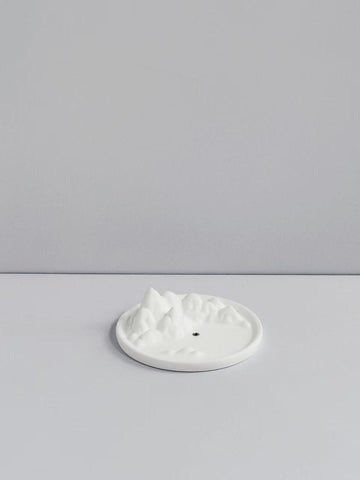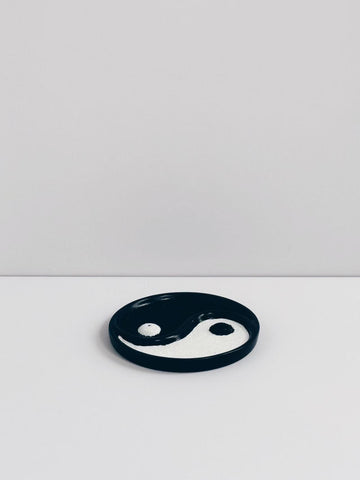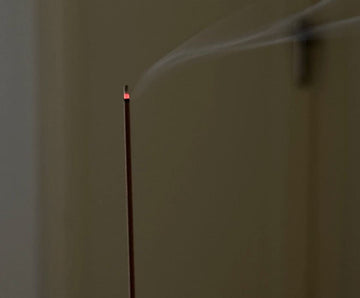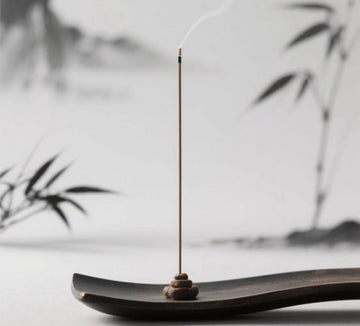In the realm of sleep rituals, few practices have stood the test of time like burning incense before bed. From ancient temples to modern wellness studios, the use of incense has evolved from spiritual offerings to therapeutic tools. Among the many types of incense available, agarwood (commonly known as 沉香) has garnered significant attention for its soothing aroma and reported benefits for mental tranquility and sleep enhancement.
But a question remains on the minds of many wellness seekers and incense enthusiasts:
Is it safe to sleep with incense burning?
This article examines the safety, efficacy, and optimal use of incense—especially agarwood—in the context of nighttime rituals. It also addresses how different types of incense compare, what scientific studies suggest, and how to responsibly integrate incense into one’s bedtime routine.
Understanding Incense: What Is It?
Incense is a plant-based substance, often composed of aromatic resins, woods, herbs, and essential oils, designed to release fragrant smoke when burned. It has been used for centuries across cultures for:
-
Religious rituals
-
Meditation and mindfulness practices
-
Air purification
-
Aromatherapy and stress relief
There are various forms of incense, including cones, coils, sticks (line incense), loose resins, and powders. Among them, line incense (线香) is particularly popular for bedtime use due to its subtle, steady burn and long-lasting aroma.
Why People Burn Incense Before Sleep
Burning incense before sleep is a tradition rooted in both spiritual belief and practical benefit. In modern wellness routines, it is commonly used to:
-
Calm the mind and reduce anxiety
-
Set a tranquil atmosphere conducive to sleep
-
Mask unpleasant indoor odors
-
Induce relaxation through scent-triggered memory and emotion pathways
The limbic system, which controls emotions and memory, is closely linked to the olfactory system. This is why certain scents, like those from agarwood, can have a profound effect on stress levels and sleep quality.
Is It Safe to Sleep With Incense Burning?
This question requires a nuanced answer. From a strict fire safety standpoint, leaving any object burning while unattended—such as while asleep—is not recommended. However, the ritual of burning incense before sleep, then extinguishing it, is generally safe and may even offer measurable health benefits.
Fire Safety Considerations
-
Never fall asleep while incense is actively burning.
-
Always place incense in a fire-resistant holder on a flat, stable surface.
-
Keep it away from flammable materials like curtains, bedding, or books.
-
Ensure proper ventilation to avoid excessive smoke accumulation.
Air Quality Concerns
Some commercial incense products contain synthetic additives or binders that release harmful particulate matter or volatile organic compounds (VOCs). Prolonged or direct inhalation of such smoke—especially in small, enclosed bedrooms—may irritate the lungs over time.
However, natural, high-quality incense such as pure agarwood has been shown to produce significantly less airborne irritants compared to synthetic alternatives.
Agarwood (沉香): The Ideal Incense for Sleep
Among all incense types, agarwood stands out for its therapeutic potency and subtle elegance. Derived from Aquilaria trees infected with a specific mold, agarwood is one of the most prized and expensive incense materials in the world.
Key Benefits for Sleep
-
Calms the Nervous System
Agarwood contains natural compounds like agarospirol, which have demonstrated sedative and anxiolytic effects in animal studies. -
Reduces Dream Disturbance
People prone to vivid or disruptive dreams often report that agarwood helps reduce nighttime mental agitation, making it easier to fall and stay asleep. -
Purifies the Environment
Agarwood’s smoke neutralizes unpleasant odors and may have antimicrobial properties, helping create a cleaner, more restful atmosphere. -
Balances the Body and Mind
In traditional Chinese medicine, agarwood is believed to regulate “Qi,” especially when the heart and kidney meridians are out of sync—often a root cause of insomnia.
How to Use Incense Before Bed Safely
The ideal practice involves burning incense approximately 30–40 minutes before bedtime, allowing the aroma to linger after the stick has naturally extinguished. This approach offers the benefits of scent therapy without the risks of falling asleep while incense is still burning.
Step-by-Step Guide:
-
Choose a Natural, High-Quality Line Incense
Look for 100% natural agarwood sticks with no artificial binders or perfumes. -
Burn One Stick 40 Minutes Before Sleep
Most line incense burns for about 30–45 minutes. Begin the ritual during your wind-down routine (e.g., reading or meditating). -
Ventilate the Room Slightly
Open a small window or turn on an air purifier to ensure gentle airflow and reduce potential smoke concentration. -
Extinguish Remaining Embers
Confirm the incense has fully burned out before getting into bed.Types of Incense Suitable for Bedrooms
While agarwood is a favorite, other natural incense types can be beneficial for bedtime use:
Incense Type
Aroma Profile
Sleep Benefits
Suitability for Bedrooms
Agarwood
Woody, soft, slightly sweet
Calming, reduces anxiety, enhances sleep
★★★★★
Sandalwood
Creamy, warm, assertive
Soothes nerves, alleviates restlessness
★★★★☆
Lavender Resin
Floral, herbal
Eases insomnia and tension
★★★★☆
Frankincense
Earthy, balsamic
Slows breathing, induces serenity
★★★☆☆
Natural incense with a low-smoke profile is ideal. Synthetic incense or overly perfumed varieties should be avoided in small sleeping spaces.
Agarwood vs. Sandalwood: Which Is Better for Sleep?
While both are excellent, they serve different preferences and purposes.
-
Agarwood (沉香):
Known for its subtle and smooth fragrance. Ideal for those seeking a gentle, long-lasting aroma that doesn’t overpower the room. Helps with deep relaxation and dream regulation. -
Sandalwood:
Offers a stronger, more vibrant scent. Often described as bold, warm, and assertive. It is invigorating yet grounding, suitable for those who enjoy a more stimulating transition into sleep.
Ultimately, the choice depends on personal preference. For beginners or those sensitive to strong scents, agarwood is often the safer, more harmonious option.
Best Practices: Tips for a Safe Nighttime Ritual
To enjoy the full benefits of incense while minimizing risks, consider the following guidelines:
-
Always Use an Incense Holder
Ensure stability and heat resistance. Metal, ceramic, or stone holders are best. -
Avoid Burning Incense All Night
Burning incense while sleeping may pose fire hazards or lead to overexposure. Instead, use incense as part of a wind-down routine. -
Keep Incense Away From Children and Pets
Even natural incense can irritate sensitive airways if overexposed. -
Choose Well-Ventilated Rooms
Bedrooms with windows or air circulation allow for healthier incense use. -
Use Complementary Sleep Aids
Combine incense with soft lighting, herbal tea, or calming music for a holistic approach to sleep hygiene.
Rest, Rejuvenate, and Burn Wisely
So, is it safe to sleep with incense burning? The short answer: It’s best not to sleep while incense is burning, but burning incense before bed—especially agarwood—is both safe and beneficial when used correctly.
Agarwood stands out as one of the best incense options for enhancing sleep quality. Its calming properties, subtle fragrance, and ability to purify indoor air make it a perfect companion for evening rituals.
For those struggling with insomnia, vivid dreams, or general nighttime restlessness, lighting an agarwood stick 30–40 minutes before bedtime may offer a serene and natural solution. As long as incense is used responsibly—with attention to ventilation, fire safety, and product purity—it can become a cherished part of your nightly wind-down routine.









